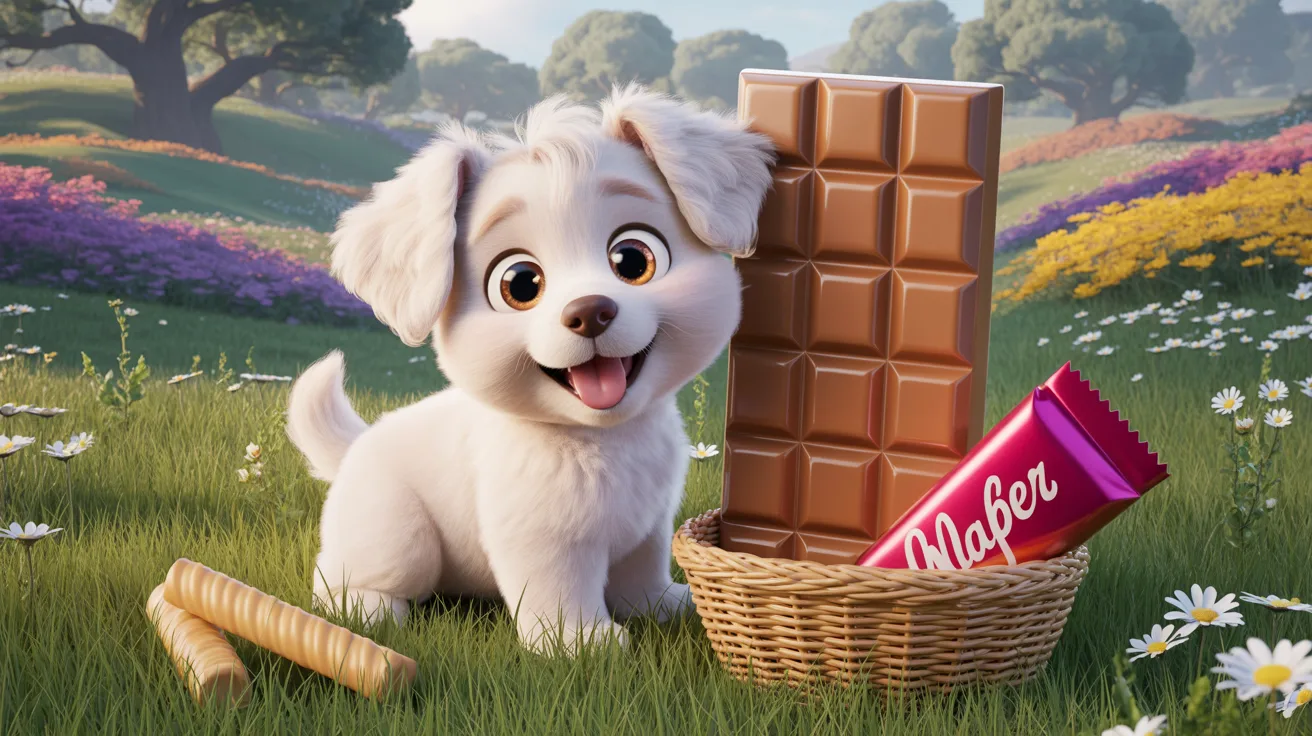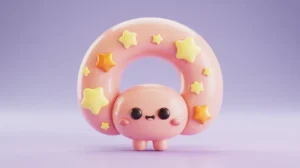Welcome to the Wafer-Thin World of Chocolate Comedy 🍫
Picture this: It’s mid-afternoon, you’re drowning in work deadlines, stress levels are skyrocketing, and suddenly you hear those magical words echoing through your mind: “Have a break, have a KitKat!” Instantly, your shoulders relax. Everything feels manageable. You unwrap that iconic red-and-silver wrapper and snap off those perfect rectangular pieces. Chocolate, wafer, chocolate—repeat. Pure happiness in bite-sized form.
KitKat was invented in 1935 by Rowntree’s of York, England, initially called “Rowntree’s Chocolate Crisp.” The name changed to KitKat in 1937, inspired by the Kit-Cat Club, an 18th-century London gentleman’s club. The famous “Have a break, have a KitKat” slogan debuted in 1957 and has become one of advertising’s most enduring campaigns—over 65 years of consistent messaging!
Today, KitKat is the world’s third best-selling chocolate bar (after Snickers and Reese’s), sold in more than 200 countries. The brand has expanded into over 200 flavors globally—from matcha in Japan to strawberry cheesecake in Europe to weird and wonderful combinations that make purists question everything. Over 400 million KitKats are consumed weekly worldwide!
So grab your favorite flavor, get comfortable, and prepare for the most delightfully crunchy collection of KitKat puns and jokes this side of the candy aisle!
🍫 Classic KitKat Puns: Breaking Into Humor
The Perfect Bar for Wordplay
KitKat’s distinctive structure—those perfectly breakable pieces—makes it inherently funny. The snapping sound, the satisfying segments, the way the chocolate breaks apart so cleanly creates comedy gold. The brand’s slogan practically begs for pun-based expansion.
The iconic shape has remained relatively consistent since inception. Four-finger bars contain four rectangles (obviously), while two-finger bars provide the more petite option. In Japan, they sell KitKat fingers by the box—perfect for meticulous snackers or people who enjoy assembly-required treats.
The wrapper’s simplicity—bold red band, silver background, the classic logo—makes it instantly recognizable worldwide. Kids, adults, and everyone in between associate that color combination with immediate chocolate satisfaction. The “Have a break” message became embedded in global advertising consciousness.
Essential KitKat Wordplay
- I tried to share my KitKat but it was impossible to break the ice! Chocolate barriers to friendship.
- Why did the KitKat go to school? Because it wanted to improve its snapping skills! Education through confectionery.
- My friend asked if I could keep a secret, and I said, “Only if you give me a KitKat—that’s a break in case of emergency!” Chocolate-based confidentiality agreements.
- The KitKat said to the other candy bars, “I’m not being rude, I just need my me-time between breaks!” Snapping for mental health.
- Why don’t KitKats ever feel broken? Because they’re designed to fall apart gracefully! Architectural dignity through segmentation.
- I asked my KitKat for advice and it said, “Just break it down into smaller pieces—makes everything manageable!” Therapeutic confectionery wisdom.
- The chocolate bar declared, “I’m not just a snack, I’m a lifestyle break!” Existential importance of pause moments.
- Why do KitKats make great comedians? Because their timing is always on snap! Precision-based humor delivery.
- I told my KitKat it was perfect and it replied, “That’s kind of you to wafer on that decision!” Compliment acknowledgment through chocolate puns.
- The KitKat factory worker said, “This job really makes me feel in-snapped with my career!” Job satisfaction through snapping.
- Why do people love KitKats? Because they literally hand-craft happiness in edible form! Manufacturing joy directly.
- I unwrapped my KitKat and thought, “This is how I like my problems—in manageable pieces!” Therapy through segmentation.
🌍 International KitKat Adventures: A Global Flavor Journey
When Chocolate Goes on Vacation
KitKat’s international expansion is legendary. The brand understood that global markets demand localization, so they created region-specific flavors that would make vanilla purists weep. Japan alone has over 200 flavors!
Japan’s KitKat obsession is so intense that limited editions become collectibles. Matcha KitKat is so popular it’s considered a traditional gift. Flavors like sweet potato, sake, wasabi, and strawberry daifuku showcase Japan’s creative candy culture. Some limited editions sell out in hours!
In Europe, KitKat experimenta with flavors like hazelnut, peanut butter, and lemon. The UK keeps it relatively classic, though they’ve tested flavors like mint and caramel. America focuses on extreme variations—chunky, filled, and sometimes shockingly sweet combinations.
The most bizarre international flavors include seaweed (Korea), garlic (China), and soft-shell crab (Korea). These aren’t mistakes—they’re intentional cultural bridges between global tastes and chocolate traditions. Some work brilliantly; others remain acquired tastes!
Read more: 106+ Flour Jokes: A Baker’s Dozen Puns Inside
International Flavor Humor
- Japan’s matcha KitKat is so fancy that I feel like I’m having a break in a temple! Zen chocolate experiences.
- Why did the international KitKat collector become famous? Because they really knew how to break boundaries! Global adventure through candy.
- The wasabi KitKat attacked my taste buds and I thought, “That’s one break I wasn’t prepared for!” Spicy surprise moments.
- I tried a strawberry daifuku KitKat and said, “This is breaking all my flavor expectations—in the best way!” Culinary revolution in chocolate form.
- Why do adventurous eaters love international KitKats? Because they’re always ready to snap into new experiences! Flavor exploration through segmentation.
- The seaweed KitKat made me question everything, teaching me that acquired tastes require serious break-through moments! Acceptance of strange combinations.
- I collected all the limited edition KitKats and realized I had created a break-through collection! Obsessive organization through chocolate.
- Why did the KitKat flavors keep multiplying? Because the brand understood that breaks need variety! Market adaptation through innovation.
- The soft-shell crab KitKat confused me until I remembered that chocolate transcends traditional categories! Culinary boundaries dissolved.
- My friend sent me a Korean KitKat mystery box and it was literally a break from my routine! Surprise delivery excitement.
- Why do people gift international KitKats? Because they’re break-ing down cultural barriers one chocolate bar at a time! Diplomatic desserts.
- I tried to rate all the flavors and learned that breaks come in infinite varieties for infinite tastes! Subjective flavor hierarchy.

🎯 Marketing Genius: The “Have a Break” Legacy
The Slogan That Changed Everything
“Have a break, have a KitKat” debuted in 1957 and became one of advertising’s most durable slogans. Over 65 years later, it still resonates. The genius lies in its simplicity—two imperatives, two iambs, perfect rhythm. It’s poetry masquerading as product placement!
The campaign understood human psychology. Work is exhausting. Breaks are essential. KitKat isn’t just candy—it’s permission to pause. This positioning transformed the brand from mere chocolate bar into a lifestyle necessity. Genius marketing through genuine insight.
The slogan works in virtually every language and culture. “Gotta break, gotta KitKat” (simplifying for translation), “Du bist dran” (German), “C’est un instant magique” (French)—each adapts while maintaining core messaging. The break concept is truly universal.
Modern campaigns have updated the slogan while respecting its legacy. Social media campaigns flip it to “What are you breaking from?” and “Take a KitKat moment.” The brand remains relevant by acknowledging that breaks evolve—from work breaks to mental health breaks to digital detoxes.
Advertising Humor
- The marketing team created the perfect slogan and basically broke the advertising industry! Generational impact through wordplay.
- Why did “Have a break, have a KitKat” last 65 years? Because good breaks never expire! Timeless messaging through necessity.
- I tried creating a competing slogan and realized that some genius simply can’t be reproduced—you’ve got to break your own mold! Originality appreciation.
- The ad campaign understood that breaks aren’t luxury—they’re psychological breaks that make us human! Marketing meets mental health.
- Why do people remember the slogan? Because it breaks through the noise of constant advertising! Signal-to-noise ratio mastery.
- My boss quoted the slogan during a stressful moment and I realized that even corporate hierarchies need chocolate breaks! Universal stress relief.
- The campaign teaches marketers that the best advertising isn’t pushy—it’s permission! Psychology-based selling genius.
- Why has the slogan survived technology changes? Because human needs for breaks remain constant across decades! Timeless human truths.
- I used the slogan as a life philosophy and discovered that people respect those who break rhythms intentionally! Philosophical chocolate guidance.
- The brand’s consistency proves that knowing when to break isn’t marketing—it’s wisdom! Advertising as life coaching.
- Why do modern brands struggle while KitKat thrives? Because they forgot that breaks break through everything! Simplicity over complexity.
- The campaign reminds us that great marketing snaps into place with simplicity and truth! Elegance through essential messaging.
Read more: 125+ Hernia Jokes & Puns: Gut-Bustingly Funny!
🏭 Behind the Scenes: Factory Facts and Manufacturing Marvels
Where Magic Meets Science
KitKat’s production is an engineering wonder. The Nestlé factory in York, England—where KitKats have been made since 1937—produces approximately 250 million KitKats annually. The assembly line moves so quickly that individual workers can’t physically wrap bars; it’s almost entirely automated.
The wafer production is crucial to KitKat’s identity. Layers of crispy wafer are stacked and then coated with chocolate in a process so precise that thickness variations are measured in millimeters. The whole bar—chocolate to wafer ratio—was engineered for optimal snapping satisfaction.
The famous “snap test” isn’t just quality control; it’s sensory verification. Workers taste-test regularly to ensure consistency. A KitKat that doesn’t snap properly is considered defective. The snap is philosophical!
The segmented design serves practical purposes beyond humor potential. The breaks make the bar easier to portion, to share, and to enjoy gradually rather than consuming everything at once. Form follows function, which then becomes part of the brand identity.
Manufacturing Humor
- The factory produces 250 million KitKats annually, proving that the world has a serious appetite for breaks! Production scale humor.
- Why did the factory automation team win awards? Because they really knew how to break things down perfectly! Engineering through snapping.
- I visited the KitKat factory and realized that precision engineering meets chocolate passion here! Manufacturing excellence visualized.
- The workers taste-test constantly and I thought, “That’s literally the best job for chocolate breaks!” Dream career identification.
- Why is the snap test so important? Because a KitKat that doesn’t snap is like a break that doesn’t refresh! Functional poetry.
- The wafer layers are engineered with precision, teaching us that good things need proper architecture! Engineering as edible metaphor.
- I learned about the production line and understood that consistent quality requires consistent breaks in the process! Manufacturing philosophy.
- Why do people appreciate hand-broken vs. machine-wrapped? Because authenticity breaks through even in industrial processes! Human touch matters.
- The packaging design has remained consistent because good breaks don’t need constant rebranding! Timeless design principles.
- Factory workers maintain perfect standards because breaking KitKats is serious business! Professional dignity through confectionery.
- Why is the York factory iconic? Because it’s been breaking chocolate perfectly for nearly 90 years! Heritage through consistency.
- The assembly line efficiency proves that sometimes the best breaks are the ones you can count on! Reliability through automation.
🎨 Creative KitKat Campaigns: When Advertising Becomes Art
The Evolution of “Break” Messaging
KitKat’s advertising has evolved while respecting the core message. The 1957 original featured simple visuals—a worker taking a break with a KitKat. Modern campaigns are far more conceptual, exploring what “breaks” mean in contemporary life.
Recent campaigns include “Take a Break” campaigns addressing mental health, digital wellness, and work-life balance. The brand tapped into social conversations about burnout, screen time, and mindfulness. Chocolate became a vehicle for discussing human needs.
The “Break What’s Expected” campaign showed people breaking traditional social norms. Skateboarders, artists, and rebels snapped KitKats while expressing individuality. The brand positioned itself as permission to be different.
Influencer partnerships have modernized the classic slogan. Social media creators show diverse break moments—yoga breaks, study breaks, creative breaks. The segmented chocolate bar metaphor extends beyond chocolate into lifestyle segmentation.
Campaign Creativity Humor
- The mental health “Break” campaign proved that chocolate can address real issues—quite literally breaking them down! Candy as therapeutic messaging.
- Why did KitKat campaigns evolve? Because breaks themselves evolved beyond just work! Adaptive marketing wisdom.
- I watched the “Break What’s Expected” ad and felt like a rebel getting permission through chocolate! Subversive advertising through candy.
- The influencer campaigns show that modern breaks look different, but chocolate remains constant! Cultural adaptation meets tradition.
- Why do KitKat ads resonate emotionally? Because they’re not selling chocolate—they’re selling self-permission! Psychology over product.
- The social media campaigns taught me that breaks aren’t selfish—they’re necessary! Normalization of rest through marketing.
- I realized that KitKat advertising understands that the best products solve real problems—even if the problem is “I need five minutes!” Practical empathy.
- Why do different cultures embrace the message? Because breaks are universally human! Transcultural needs addressed.
- The brand’s evolution proves that loyalty comes from respecting what customers actually need! Human-centered business philosophy.
- I appreciated how campaigns normalize breaks, teaching us that taking time for yourself isn’t indulgent—it’s essential! Destigmatizing rest.
- Why does KitKat advertising never feel pushy? Because offering breaks is inherently respectful! Gentle persuasion through empathy.
- Modern campaigns address anxiety, depression, and stress, showing that candy brands can contribute to conversations about wellbeing! Commercial responsibility.
Related: 101+ Glacier Jokes & Puns: Chill Out With These!
👨👩👧👦 Pop Culture & Entertainment: KitKat in Movies, TV & Music
Breaking Into Entertainment
KitKat has appeared in countless films and TV shows, from casual snacks to plot devices. The distinctive wrapper makes it instantly recognizable on screen. Product placement worth millions, but it feels natural because KitKat is genuinely part of people’s lives.
The brand cleverly appears in moments of stress or relaxation—characters snapping a KitKat during tense work scenes or family moments. It’s so ubiquitous that audiences barely notice, which is advertising perfection.
Music references KitKat occasionally, though it’s less common than Coca-Cola or McDonald’s. The slogan has been remixed in various songs as cultural reference. The chocolate bar represents breaks and momentary escape in lyrics and storytelling.
Social media has amplified KitKat’s entertainment presence. TikTok videos of satisfying snaps and creative break moments have millions of views. The ASMR snapping sound has become weirdly meditative. Gen Z discovered the psychological benefits of watching chocolate break perfectly.
Entertainment Humor
- Every movie character who snaps a KitKat teaches us that dramatic tension releases through chocolate! Cinematic stress relief.
- Why is KitKat so perfect for product placement? Because it naturally breaks into scenes without breaking immersion! Seamless integration achievement.
- I watched a character stress-eat a KitKat on screen and thought, “Finally, realistic coping mechanisms in movies!” Accurate portrayal of crisis management.
- The ASMR KitKat snapping videos exist because humans universally respond to satisfying break sounds! Bioacoustic chocolate appreciation.
- Why do TV characters reach for KitKat? Because writers understand that breaks are relatable plot devices! Narrative efficiency through candy.
- I realized that KitKat appears in films during important moments because breaks mark transitions in stories! Structural symbolism through chocolate.
- The social media KitKat trends prove that satisfying snaps are entertainment independent of flavor! Visual satisfaction paramount.
- Why do music references to KitKat feel natural? Because the slogan already sounds like a song! Innate musicality of messaging.
- My Gen Z cousin watches KitKat unboxing videos and I learned that entertainment evolves—chocolate snapping is now content! Contemporary entertainment definitions.
- The TikTok KitKat challenges show that breaks have become performative art! Social media reimagines tradition.
- Why does the brand succeed in pop culture? Because it represents something everyone understands—needing a moment! Universal relatability.
- Product placement perfection exists when audiences don’t resent the brand presence—KitKat achieves this through authenticity!** Ethical commercialism.
💡 KitKat Innovation: When Chocolate Gets Experimental
Breaking the Mold
KitKat’s willingness to experiment sets it apart from competitors. The two-finger, four-finger, chunky varieties, filled centers, and extreme international flavors show a brand unafraid to innovate while respecting core identity.
The “KitKat Max” line added more chocolate and inclusions—respecting that some people want more than a break, they want an indulgence. The “KitKat Senses” range explored multi-sensory experiences. Each innovation tested whether breaks could look different.
The brand experimented with limited editions that became collectible. Ruby chocolate KitKats arrived in 2018—a naturally pink chocolate variety previously unavailable. Some purists questioned this radical departure; others celebrated the innovation as worthy tribute to KitKat’s break philosophy.
Sustainability innovations include packaging research and ingredient sourcing. The brand invested in recycled materials and ethical cocoa sourcing—recognizing that modern breaks should include breaks for the planet.
Innovation Humor
- The KitKat Max exists because some people believe bigger breaks are better breaks! Expanded recreational philosophy.
- Why did KitKat introduce ruby chocolate? Because even chocolate deserves to break color barriers! Inclusive confectionery.
- I tried the chunky version and realized that innovation doesn’t require abandoning tradition! Respectful experimentation.
- The sustainable packaging initiatives prove that modern breaks should include planet breaks! Environmental consciousness through candy.
- Why do people collect limited edition KitKats? Because breaks are worth commemorating! Nostalgia through collectibles.
- The filled center varieties teach us that reinvention can honor the original! Respectful innovation demonstrated.
- I watched the brand experiment and understood that trying new things is inherently human—even in chocolate form! Exploration through candy.
- Why does KitKat innovate thoughtfully? Because reckless experimentation would break their core promise! Philosophy guides innovation.
- The matcha KitKat success showed that honoring cultural preferences creates global appeal! Respectful innovation through localization.
- Modern packaging research demonstrates that breaks need to be good for everyone—including the planet! Holistic responsibility.
- Why do discontinued flavors create such nostalgic communities? Because breaks are emotionally significant! Food science meets psychology.
- KitKat’s experimental approach proves that honoring tradition while embracing change isn’t contradictory—it’s evolutionary! Philosophy in action.
🎭 Humor Through the Decades: KitKat Comedy Evolution
Breaking into Funny Business
KitKat jokes predate modern internet culture. The simple premise—that a chocolate bar is called KitKat and consists of breakable pieces—writes itself. The slogan alone invites creative wordplay.
Vintage commercials featured gentle humor. 1960s-70s ads played with the break concept, showing people taking literal breaks or metaphorical ones. The humor was accessible without being forced.
The internet age weaponized KitKat humor. “Gimme a break, gimme a break” became instantly meme-able. Reddit and Twitter users created endless variations—”gimme a break from my responsibilities,” “gimme a break from adulting,” “gimme a break from bad decisions.”
Modern KitKat humor embraces absurdity. TikTok creators imagine KitKat breaks in ridiculous situations. YouTube videos explore “what breaks would you take with infinite KitKats?” The brand evolved from wholesome humor to embrace internet culture’s chaos.
Comedy Evolution Humor
- 1950s KitKat ads taught that breaks are revolutionary—in the most polite British way possible! Understated radical change.
- Why did internet culture adopt KitKat humor? Because the premise was already comedy gold! Self-aware candy marketing.
- The vintage ads featured people literally pausing, reminding us that sometimes humor is just showing the obvious! Slapstick through segmentation.
- I watched old commercials and realized that KitKat invented break-based entertainment before memes existed! Prophetic confectionery.
- Why do modern jokes reference the slogan constantly? Because “gimme a break” is already comedically perfect! Universal punchline potential.
- The Reddit communities dedicated to KitKat jokes prove that the internet found its chocolate soulmate! Algorithmic humor matching.
- TikTok creators pushing KitKat humor boundaries taught me that traditions can survive irreverent humor! Resilient branding.
- Why do boomers, millennials, and Gen Z all find KitKat funny? Because breaks transcend generational divides! Universal comedy across ages.
- The meme evolution shows that good premises survive adaptation—they thrive through it! Flexible humor architecture.
- Modern absurdist KitKat humor demonstrates that the best jokes evolve with their audiences! Living humor traditions.
- Why does professional comedy reference KitKat? Because comedians respect advertising that’s already inherently funny! Mutual appreciation society.
- The brand’s survival through comedy evolution proves that humor respects what’s genuine! Authenticity in advertising.
🌟 KitKat Jokes Finale: Final Break with Laughter
Wrapping Up with Joy
We’ve taken a comprehensive break through KitKat’s world together! From its 1935 invention to modern TikTok trends, from classic slogan to international innovations, we’ve explored every delightful aspect of this chocolate classic with humor and appreciation.
Throughout this journey, we’ve discovered essential truths. KitKat isn’t just candy—it’s permission. It’s a moment captured in edible form. It’s cultural ubiquity that somehow remains beloved. It’s marketing genius wrapped in wafer-thin simplicity.
What We’ve Learned
We’ve learned that longevity in business comes from understanding human psychology. People don’t need chocolate; they need breaks. KitKat positioned itself as the solution to a fundamental human need. That positioning has remained true for nearly 90 years.
We’ve discovered that simplicity is revolutionary. The break-able design, the simple slogan, the consistent messaging—none of it is complicated. Yet it’s unforgettable because it respects what customers actually need.
We’ve confirmed that honoring tradition while embracing innovation creates loyalty. KitKat respects its heritage while experimenting with flavors, marketing, and applications. The brand knows when to snap and when to hold together.
Your Turn to Break
Which KitKat pun made you smile? Do you have a favorite flavor, memory, or KitKat moment? Share your breaks—er, stories—in the comments below!
Tell us about your KitKat preference! Are you a snapper or a biter? Do you collect international flavors? Have you experienced that one weird flavor that shouldn’t exist but somehow does? We want to hear!
Spread the Chocolate Comedy
Don’t keep these puns to yourself! Share this article with fellow KitKat enthusiasts. Send it to that friend who’s obsessed with chocolate. Post it for anyone who needs permission to take a break (which is everyone).
Tag someone whose life philosophy should be “Have a break, have a laugh.” Forward it to people who appreciate good wordplay and better chocolate. Or share it with whoever needs the reminder that breaks aren’t luxury—they’re necessity!
Final Sweet Thoughts
Remember, KitKat taught us something profound through something simple: the world stops for no one, but we can steal moments for ourselves. Those moments matter. They recharge us, restore us, and remind us why we’re running in the first place.
Whether you’re taking a work break, a mental health break, a digital detox break, or just a “I need five minutes” break, you deserve it. KitKat understood this before wellness became trendy. The brand recognized that pausing isn’t weakness—it’s survival.
One Last Snap of Wisdom
The next time you unwrap a KitKat, really think about what you’re doing. You’re not just eating chocolate—you’re claiming a moment. You’re following 90 years of advice from a candy bar. You’re participating in a global conversation about rest, permission, and the value of pausing.
So snap your bar into pieces. Enjoy each segment. Take your break guilt-free. And remember: if KitKat can convince the world that breaks are essential, surely we can convince ourselves!
Final KitKat pun: Why did the chocolate bar go to therapy? Because it needed to break through its wrapper issues!
Read more: 108+ Frisbee Puns & Jokes: Disc-Over the Laughter!









